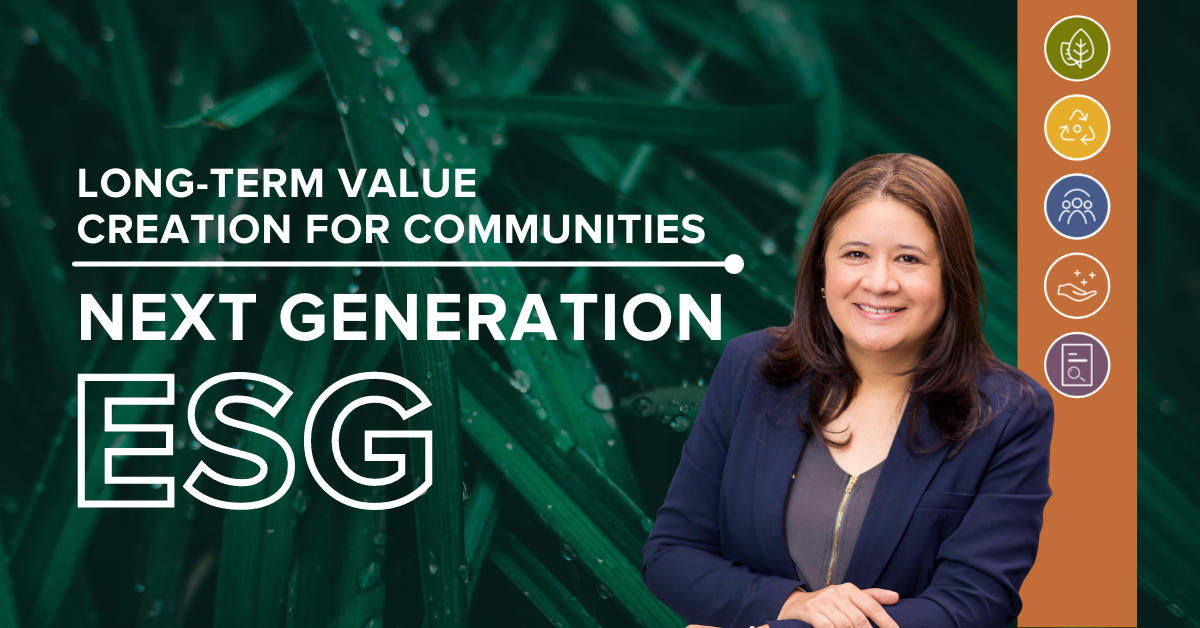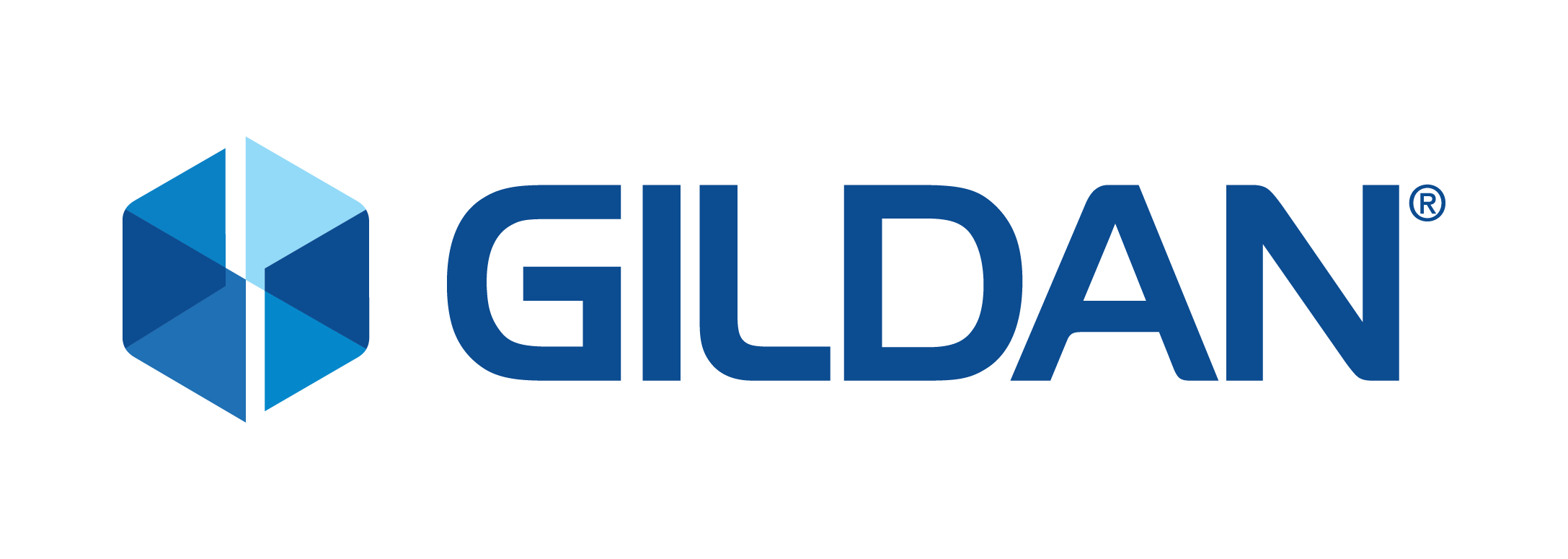How Gildan Plans to Build Long-term Value for Its Communities
Q&A with Claudia Sandoval, Vice-President of Corporate Citizenship at Gildan

Since its beginnings, Gildan has operated on the principle that it is possible to make high-quality and durable apparel manufactured responsibly for people, for the environment, and for the communities in which it operates. That thinking has pushed the Company to innovate sustainably over the years, guided by Gildan’s ESG strategies that support value-creation for all its stakeholders.
Leveraging Gildan’s core competencies and strengths to create win-win partnerships has been central to the Company’s approach. Gildan has always been deeply committed to its communities because the Company understands that healthy and resilient thriving communities, in turn, foster resilient businesses. Earlier this year, Gildan announced its “Next Generation ESG” strategy and future targets outlining the Company’s areas of focus and ambitions through 2030. Among its goals, Gildan remains committed to positively impacting social and economic development in regions where the Company operates through meaningful and sustainable community programs and employee volunteerism.
To understand more about Gildan’s approach and targets, we spoke with Claudia Sandoval, Vice President of Corporate Citizenship who, for the past two decades, has led the Company’s efforts to support development opportunities and create positive impacts in Gildan’s manufacturing hubs.
Q. Can you tell us more about Gildan’s track record of community impacts?
Gildan has always prioritized being an active participant in developing stronger communities where it operates. By virtue of its scale and global footprint, the Company has been in a unique position to support local economic development and partner with organizations to target and respond to the most pressing local needs. On an annual basis, we generally donate around USD $1 million in support of our community partners. In addition to donations, we also prioritize contracts with more than 3,000 local suppliers across our footprint and we favor local employment, with approximately 85% of our managers hired locally. By consistently aligning our partnerships and projects to our core competencies and purpose, we have been able to drive meaningful impact.
Q. What ambitious community-focused goal has Gildan set as part of the Company’s “Next Generation ESG” strategy?
Gildan intends to incrementally increase the allocation of capital toward purposeful and value-driven projects in regions where the Company operates. Its goal is to gradually reach a contribution of 1% of the Company’s pre-tax earnings by 2026.
As we worked with colleagues from across the organization in developing our strategy, we realized that increasing our contribution and moving from philanthropic donations to strategic community investments was especially important if we wanted to make significant impacts in our operating communities. What I’m especially proud of is our determination as a Company, with support across our functions to commit to this target. It demonstrates to me – and to every Gildan employee and business partner – that our Company truly sees how positive community impact can drive long-term business performance.
Q. What is your criteria when selecting community partnership opportunities?
Our community engagement activities have always had a link to our core business strengths and to our values, while aligning with local needs. While we are currently reviewing our community investment process to best support advancement of our “Next Generation ESG” strategy, Gildan’s community engagement activities have historically been focused on youth education, wellness and active living, the environment, and entrepreneurship.
We know that a healthier workforce with greater access to care and wellbeing initiatives is also a more productive and engaged workforce. A more informed, educated, and engaged workforce supports local economic development and upskilling opportunities as we evolve our operations. Investing to support the protection of natural resources and habitats also helps protect our license to operate responsibly for years to come. Simply put, thriving businesses exist within thriving communities and that thinking guides our strategy. As we move forward, we will look to partner with thought leaders, including NGOs and academic organizations, who are pioneering innovative solutions to help us achieve our goals. Additionally, we know that key stakeholders including our own employees, our communities, governments, and investors will look to us to describe not just the outcomes of our community investment activities but also the tangible impacts to help create reliable blueprints for the private sector. As we work through our new process, we will need to ensure we have clear criteria, that allow us to capture those important learnings.
Q. Can you tell us about some of your flagship programs?
I will start by saying that we do not have a singular flagship program, but rather a number of long-term partnerships that have made meaningful impacts where we operate. One example is our decade-long partnership with World Vision in Honduras to support children through quality education, environmental conservation, and leadership support. Over the years, we have reached more than 147,000 children and more than 5,000 teachers through this partnership.
From an employee volunteering perspective, there is always tremendous support and energy around our annual Gildan Glow Run, which we were not able to hold since the start of the pandemic, but we hope to reactivate again soon. This event is a night race in which participants wear clothing and accessories that glow in the dark to capture the spirit of the event and bring families together in celebration and solidarity to raise funds for local organizations. Our 2019 event in Honduras raised funds for the construction of the pediatrics building of the Leonardo Martinez Hospital that offers free services to children requiring specialized medical care.
Q. What are some of the next steps to driving your long-term value creation targets?
Having local experts and their perspectives to help weigh in on strategy and provide counsel is always essential when we design and implement our strategy. That is why we are working with representatives from all our regional hubs and our ESG Steering Committee. Together, we will work to finalize our allocation framework and formalize global and local partnerships, in addition to developing a framework for our Company-wide volunteering program to reach 100,000 hours of employee volunteerism by 2026.
Q. How do you track or calculate the impacts that you are making in your communities to guide future decisions and allocation of capital?
One of the shared challenges for any organization is measuring return on investment related to community engagement programs. There are enough studies to show the correlation between proactive community support and resilient business operations, but every business needs its own assessment model. Fortunately, we have some experience in measurement and quantification that we’ll be applying as we move forward.
In 2019, we conducted a Social Return on Investment (SROI) study to understand the impact of our operations in Central America. The results of the study showed that our community engagement efforts are making quantifiable positive impacts in each region. For example, the study revealed that for every US dollar invested locally by the Company in Honduras, it generated an additional USD $13 in value for the Honduran society. In Nicaragua, the return on each dollar was even higher, amounting to USD $19 in returned value for stakeholders across the nation. These results helped inform our community investment strategy in Honduras and Nicaragua in 2020 where we focused on education and environmental programs aimed at improving water security and waste management and promoting active and healthy lifestyles.
Looking ahead, we’ll look at building out metrics that will cover performance across stakeholder groups including the impact on employee engagement through volunteering, the impact on access to talent and innovation, as well as partnerships with local suppliers with a proven track record of strong ESG performance.
Q: What are you most looking forward to as you look to make progress against your targets?
The ultimate goal is of course the positive impact that we will make in meaningful, locally relevant ways. Additionally, we need to ensure that our efforts are aligned to our business strategy to ensure commitments are meaningful and relevant to Gildan. In order to ensure this, the Long-Term Value Creation targets should directly support our other long-term targets focused on Climate, Energy and Water; Human Capital Management; and, Circularity. Examples would be to partner with organizations focused on the reduction of plastic waste or the urgency of decarbonization, currently affecting all countries, including the communities in which we operate. Potentially it could help our suppliers who may not be able to otherwise, create new and innovative business models that tackle and address these complex issues while supplying our business with a valuable service. This level of thinking around strategic partnerships requires long-term vision and commitment to see sustained results. However, in the short term, I would say that I am most excited about collaborating with our colleagues and current partners located in our local operating communities. Many of the problems in our local communities are complex and will require all the above solutions as well as a variety of inputs from key stakeholders to successfully address these challenges. There is an expression that says: If you want to go fast, go alone. If you want to go far, go together. I am a firm believer that we are stronger with diversity of thought, backgrounds, and experience – and that is what each of us brings to the process.

